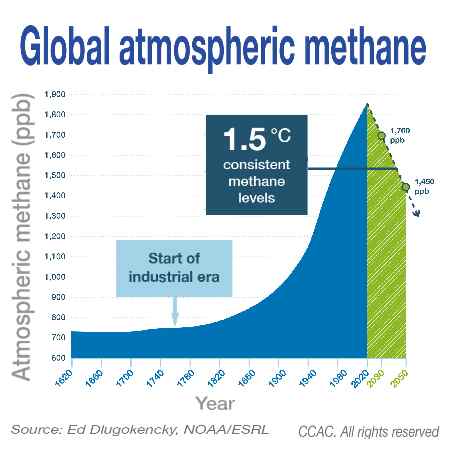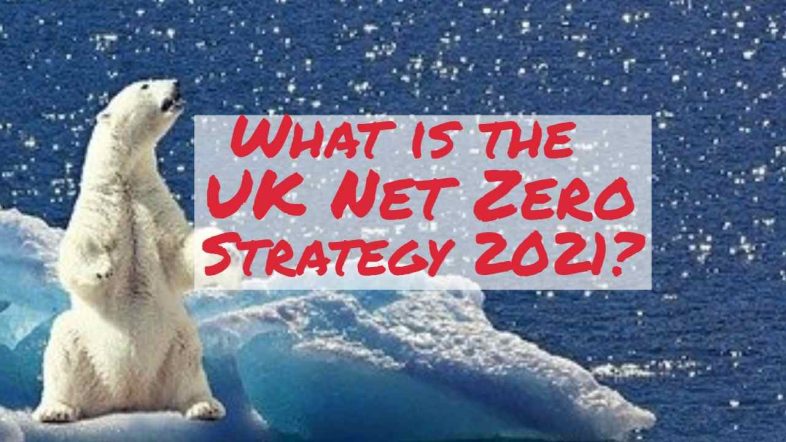What is the UK Net Zero Strategy 2021? – It's a decarbonisation plan and part of the UK government's plan for “Building Back Better” after the covid pandemic. Read on for our full explanation.
According to the climate change committee (CCC), the UK objective of achieving net-zero emissions by 2050 is a feasible, inexpensive strategy that would give employment, investment, and broader benefits to the UK.
Also, the initial reaction suggests that according to climate experts, the UK's net-zero strategy is both feasible and cheap in comparison with doing nothing.
Net Zero Strategy: Greener Construction
This is a programme that is intended would expand on the much-lauded “Build Back Greener” approach in order to keep the UK on track for UK carbon budgets, with its 2030 nationally determined contribution, and achieve net-zero emissions by 2050.
On October 19, 2021, the UK government announced its climate change strategy, “Net-zero Strategy: Build Back Greener,” detailing initiatives to aid the UK economy's transition to a greener and more sustainable future.
The government also published a heat and buildings strategy, which defines the United Kingdom's primary net-zero research and innovation goals for the next five to ten years. The approach includes measures to insulate buildings and reduce heat.
Taxonomy of Emissions in the Net Zero Strategy
The calculations for the net-zero method include the latest recent estimates of peatland emissions, which were significantly revised earlier this year. As a result, the UK's greenhouse gas emissions are roughly 16 million tonnes CO2e more than previously predicted.
The UK government's new net-zero policy spells out for the first time how it intends to cut UK emissions in half in less than a decade and eliminate them entirely by 2050. Overall, the strategy's goals are commensurate with the UK's emissions targets of net zero by 2050 and a 78% reduction from 1990 to 2035. (Relative to 2019, this is a 63 per cent increase).
The Net Zero Strategy of the United Kingdom
Methane Forecast until 2050
The UK's Net Zero Strategy details how the country will reach its goal of achieving net-zero emissions by 2050.
The UK government unveiled its revolutionary Net Zero Strategy on October 19, 2021, stating how the UK will secure an additional 440,000 well-paid jobs and unlock £90 billion in investment by 2030 on its approach to eliminating its impact on climate change by 2050.
The commitments made will result in up to £90 billion in private investment by 2030, resulting in 440,000 well-paid jobs in green industries.
This will instil confidence in businesses, allowing the UK to gain a competitive advantage in the most cutting-edge low-carbon technology – from heat pumps to electric cars – as well as in establishing strong green sectors in our industrial heartlands – from carbon capture to hydrogen, with new funding.

What Is the United Kingdom's Net-Zero Strategy?
On October 19, the UK government released its ‘net-zero strategy' (NZS), along with a number of other essential strategy documents (almost 2,000 pages in all), to help the UK fulfil its interim five-year carbon targets, with the goal of reaching net-zero by 2050.
Annual progress reports against a set of key measures should be made public. Reaction:. Overall, the net-zero approach has been lauded for providing a clear answer to the size of the climate change challenge, as well as the transformation of the UK economy that would be required for decarbonization over the next 30 years.
According to the UK government's net-zero strategy, its objectives are founded on the idea of “leaving the environment in better shape for:
the next generation' and removing the financial burden of responding to a warmer world
On closer investigation, however, none of this is accurate. In reality, the UK's net-zero strategy falls short of executing a number of critical near-term steps recommended by the government's experts, the climate change committee.
What does the net-zero approach have to say about it?
 Maintaining carbon reductions requires rather strict government leadership, backed up by a good net-zero strategy, which the UK recently announced. The UK will get there, according to the policy.
Maintaining carbon reductions requires rather strict government leadership, backed up by a good net-zero strategy, which the UK recently announced. The UK will get there, according to the policy.
In combination with the newly revealed net-zero strategy, hosting COP26 in 2021 provides the UK with a new opportunity for global influence, this time as a leader in building the markets and policy changes necessary to reach net-zero.
Other areas in the UK's net-zero plan
However, the UK, like most other countries, will need to move beyond words and incremental investment in all industries. The net-zero plan outlines how and where the UK will capitalise on the economic benefits of the low-carbon transition, as well as how sectors and places reliant on fossil fuel industries will adapt and thrive in a net-zero environment.
Carbon emissions experts are working in a number of sectors to produce genuine net-zero plans. Some may be able to assist company boards in establishing a strategy that will withstand the test of time and position every firm as the true industry leader.
UK policy materials on the net-zero approach have been issued
With only a few days until the COP26 meeting in Glasgow, Prime Minister Boris Johnson has released the UK government's new “net-zero” strategy, which expands on previous policy documents.
The policy declaration outlines the government's goals to achieve net-zero emissions by 2050.
What about the Treasury's net-zero assessment?
The strategy was issued alongside the HM Treasury's net-zero assessment, which looks at the key challenges and trade-offs that the UK will face as it decarbonizes, as well as economic changes over the next thirty years.
The treasury net-zero evaluation bolstered the case for net-zero and raised awareness of numerous major policy challenges.
What does the net-zero approach have to say about each industry?
The net-zero plan recognises the need for skill reform across all industries. Curricula in further education and higher education will need to undergo some significant adjustments.
How will the United Kingdom achieve net-zero emissions?
To begin with, the United Kingdom must become more energy efficient. A considerable adjustment is required to make houses more energy-efficient and less draughty. We will almost certainly have to drive less, with some forecasting a 5% decrease in kilometres travelled.
The next stage is to purify the energy supply. That looks to be a possibility. Renewable energy is always becoming “better and better and cheaper and cheaper,” and it is vital that this trend continues.
Over the next 15 years, the CCC anticipates a 20% decrease in meat and dairy consumption. Stark predicts a more radical shift to lab-created protein – synthetic meat: Avoiding the production of meat through the use of vegetable-based replacements might be a game-changer. Some of the difficult land use and agriculture problems that UK officials are concerned about would be liberated.
Domestic transportation in the United Kingdom is part of the country's net-zero policy
The Hydrogen Strategy contains plans to spend £4 billion in blue and green H2 generation, storage, and consumption over the next decade, while the Transport Decarbonisation Plan outlines how all modes of domestic transportation will contribute to the national net-zero goal.
By 2050, all modes of transportation in the United Kingdom (road, rail, sea, and air) will be carbon-free.
Its Transport Decarbonisation Plan promises to phase out the sale of new diesel and petrol heavy goods vehicles by 2040, five years after polluting cars and vans are phased out. Domestic aviation's harmful emissions will be eliminated by 2040, and rail will be net-zero by 2050.
Other important goals include boosting average road vehicle occupancy by 2030, setting a rail freight growth target, and demonstrating zero-emission HGV technology on UK roads this year.
This year, it also plans to release a ‘Local Authority Toolkit,' which will provide instructions to assist local governments in implementing more sustainable transportation programmes.
The plan's main strategic goals include speeding the modal shift to public and active transportation – making them the “natural first option” for everyday travel – as well as decarbonizing road transportation and logistics and concentrating on “place-based solutions” to reduce emissions.
Why Launch the UK Net Zero Strategy 2021?
The report was launched in response to the Government's pledge last year to invest £2 billion on active transportation, as well as plans to upgrade buses and trains earlier this year.
However, other than electrifying our automobiles and “gliding gently through our cities,” the strategy offers little expansion and depth for the transportation industry that hasn't already been outlined in the Transport Decarbonisation Plan. In addition, there have been recent announcements and policy texts.
Furthermore, while this strategy is ambitious on a national scale, it is heavily reliant on international commitment and collaboration.
Decarbonising Buildings and Heat
The UK government unveiled its net-zero strategy, which includes provisions for sustainable aviation fuel (SAF), bioenergy with carbon capture and storage (BECCS), and efforts to decarbonize heating.
Both the heat and buildings plan and the UK net-zero strategy, both published this week, acknowledge the potential rise in the use of heat networks and heat pump systems as a means of tackling both winter heating and summer building overheating problems.
Despite the fact that the heat and buildings plan is almost completely focused on how low-carbon heat can be distributed across the UK building stock, it states that the government is “aware of the present and potential future need for cooling.”
Removal of greenhouse gases
 The United Kingdom will propose the UK net-zero strategy to the United Nations Framework Convention on Climate Change (UNFCCC) as the country's second long-term low-carbon development strategy under the Paris Agreement.
The United Kingdom will propose the UK net-zero strategy to the United Nations Framework Convention on Climate Change (UNFCCC) as the country's second long-term low-carbon development strategy under the Paris Agreement.
Its “net zero” objective for the United Kingdom to attain zero greenhouse gas emissions by 2050 includes, among other things, a £1 billion electric vehicle revolution, more trees, and electric boilers.
Efficient Conversion of Sewage to Biogas: Advancing Waste Treatment for Sustainable Energy Generation
Read on to learn about advancing foul waste treatment, for sustainable energy generation through the efficient conversion of sewage solids to biogas. When we talk about waste, it can seem like a dirty subject. But what if we could turn that waste into something useful? Imagine the mucky water and sludge from our toilets and […]
The Importance of Carbon Removals in Achieving Net Zero
Carbon removals being the opposite of carbon emissions will be a significant contributor to the effort to reduce the worst effects of climate change and global warming. While reducing emissions is crucial, it is not enough to achieve the goal of net zero by 2050. Active removal of carbon from the atmosphere is necessary. Of […]
US Falling Short on Methane Emissions Reduction Commitments from Landfills: Report
The United States is failing to uphold its commitment to reducing methane emissions from landfills, a promise it made at the Glasgow 2022 Climate Change Conference, according to a new study. The United Nations Framework Convention on Climate Change (UNFCCC) has identified this issue as an easily achievable solution for mitigating climate change within the […]
UK Begins Fightback Against Plastic Pollution: Dramatic 2040 Deadline Set for a Cleaner Future
The UK government has signed a Ministerial Statement calling for an ambitious global plastic pollution treaty to tackle plastic pollution and protect the marine environment. A plastic pollution treaty is sought for: including a reduction in single-use plastics, the improvement of waste management and recycling systems, and the promotion of sustainable and circular economy models. […]








